Electric scooters are a fun, convenient, and eco-friendly way to get around town. But before you hop on one, you need to know the rules of the road. Electric scooter laws by state do vary and sometimes by city or county. Some states have clear regulations for electric scooters, while others have none at all. To avoid getting into trouble or putting yourself at risk, you should familiarize yourself with the electric scooter laws in your area.
In this article, we will answer some common questions about electric scooter laws by state, such as:
- Are electric scooters legal in all states?
- What age is required to operate an electric scooter?
- Do we need a driver’s license to ride an electric scooter?
- Are helmets mandatory when using an electric scooter?
- Can electric scooters be ridden on sidewalks?
- What are the speed limits for electric scooters in each state?
- Are there any specific rules regarding parking electric scooters?
- Is there a limit to the motor power or wattage of electric scooters?
- Are electric scooters allowed on bike lanes or public roads?
- Do insurance required for electric scooters?
We will also provide some tips on how to ride safely and responsibly on an electric scooter. Let’s get started!
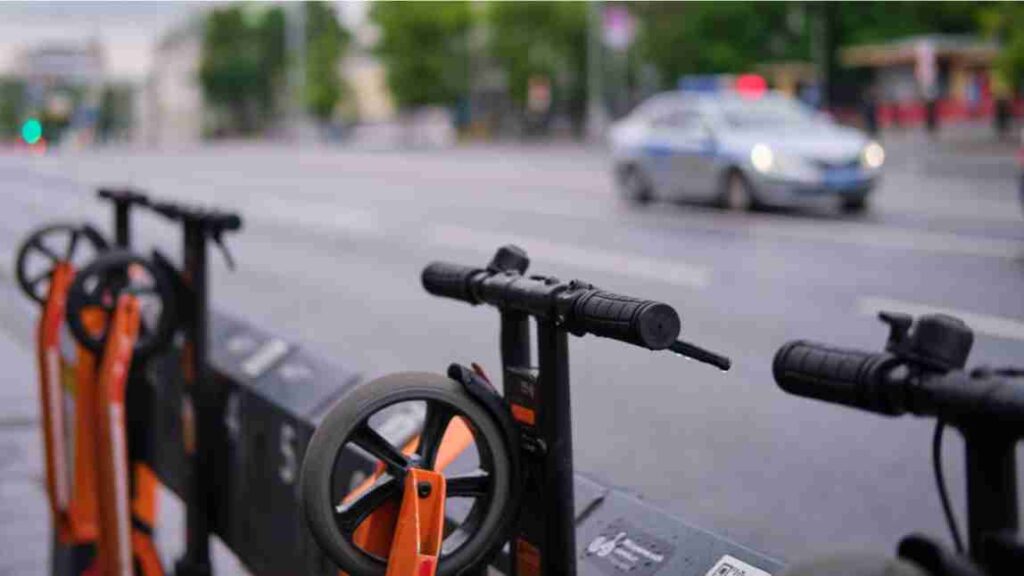
Table of Contents
ToggleGeneral rules and regulations for electric scooter Laws By State in the United States
Electric scooters are considered personal mobility devices that use an electric motor to propel them. They typically have two or three wheels, a handlebar, a platform or seat for the rider, and a maximum speed of 15 to 20 mph.
Electric scooters are different from mopeds, motorcycles, or bicycles, which have their own sets of laws and regulations.
There is no federal law that governs electric scooters in the United States. Instead, each state has the authority to define and regulate them according to their own criteria.
Some states classify electric scooters as motor vehicles, while others consider them as bicycles or toys. Some states have specific statutes or regulations for electric scooters, while others rely on existing laws for similar vehicles or devices.
As a result, electric scooter laws by state can vary widely in terms of requirements, restrictions, and permissions.
For example, some states may require electric scooter riders to have a driver’s license, registration, or insurance, while others may not.
Some states may mandate helmet use for electric scooter riders, while others may leave it up to personal choice. Some states may allow electric scooters on sidewalks, bike lanes, or roads, while others may prohibit or limit them.
Are Electric Scooters Legal in All States?
The short answer is no. Electric scooters are not legal in all states. According to a study by Unagi Scooters, there are 10 states where electric scooters are not street-legal: Alaska, Hawaii, Nebraska, North Dakota, South Dakota, South Carolina, West Virginia, Wyoming, Montana, and Idaho. These states either have no regulations for electric scooters or prohibit them on public roads.
On the other hand, there are 38 states where electric scooters are legal, with varying degrees of restrictions. These states have different rules for speed limits, riding locations, registration requirements, and other aspects of electric scooter use.
Some states also allow local authorities to enact their own ordinances for electric scooters, which may differ from the state laws.
Which states require a license, registration, or insurance for electric scooters?
One of the most common questions that electric scooter riders have is whether they need a license, registration, or insurance to ride one legally. The answer depends on the state where you live or ride. Here is a summary of the requirements for license, registration, and insurance for electric scooters by state:
| State | License | Registration | Insurance |
|---|---|---|---|
| Alabama | Yes | Yes | Yes |
| Alaska | Yes | No | No |
| Arizona | No | No | No |
| Arkansas | No | No | No |
| California | Yes (for riders 16 and older) | No | No |
| Colorado | No | No | No |
| Connecticut | No | No | No |
| Delaware | No | No | No |
| Florida | No (for riders 16 and older) | No (for devices under 2 hp) | No (for devices under 2 hp) |
| Georgia | No (for devices under 50 cc) | Yes (for devices over 50 cc) | Yes (for devices over 50 cc) |
| Hawaii | No (for devices under 2 hp) | Yes (for devices over 2 hp) | Yes (for devices over 2 hp) |
| Idaho | No (for devices under 30 mph) | No (for devices under 30 mph) | No (for devices under 30 mph) |
| Illinois | Yes (for devices over 20 mph) | Yes (for devices over 20 mph) | Yes (for devices over 20 mph) |
| Indiana | No (for devices under 25 mph) | Yes (for devices over 25 mph) | Yes (for devices over 25 mph) |
| Iowa | No (for devices under 20 mph) | ||
| Kansas | Yes (for devices over 35 mph) | Yes (for devices over 35 mph) | Yes (for devices over 35 mph) |
| Kentucky | No | No | No |
| Louisiana | No (for devices under 5 hp) | No (for devices under 5 hp) | No (for devices under 5 hp) |
| Maine | Yes (for devices over 25 mph) | Yes (for devices over 25 mph) | Yes (for devices over 25 mph) |
| Maryland | No (for devices under 30 mph) | No (for devices under 30 mph) | No (for devices under 30 mph) |
| Massachusetts | Yes | Yes | Yes |
| Michigan | No (for devices under 100 cc) | No (for devices under 100 cc) | No (for devices under 100 cc) |
| Minnesota | No (for devices under 2 hp) | No (for devices under 2 hp) | No (for devices under 2 hp) |
| Mississippi | No (for devices under 2 hp) | No (for devices under 2 hp) | No (for devices under 2 hp) |
| Missouri | Yes (for devices over 3 hp) | Yes (for devices over 3 hp) | Yes (for devices over 3 hp) |
| Montana | No (for devices under 50 cc) | No (for devices under 50 cc) | No (for devices under 50 cc) |
| Nebraska | No (for devices under 50 cc and 30 mph) | Yes (for all devices) | Yes (for all devices) |
| Nevada | No (for devices under 2 hp and 20 mph) | No (for devices under 2 hp and 20 mph) | No (for devices under 2 hp and 20 mph) |
| New Hampshire | No (for devices under 50 cc and 30 mph) | No (for devices under 50 cc and 30 mph) | No (for devices under 50 cc and 30 mph) |
| New Jersey | No (for devices under 100 cc and 19 mph) | Yes (for all devices) | Yes (for all devices) |
| New Mexico | No (for devices under 50 cc and 30 mph) | No (for devices under 50 cc and 30 mph) | No (for devices under 50 cc and 30 mph) |
| New York | No (for devices under 20 mph) | No (for devices under 20 mph) | No (for devices under 20 mph) |
| North Carolina | Yes (for all devices) | Yes (for all devices) | Yes (for all devices) |
| North Dakota | No (for devices under 50 cc and 30 mph) | Yes (for all devices) | Yes (for all devices) |
| Ohio | No (for devices under 50 cc and 20 mph) | No (for devices under 50 cc and 20 mph) | No (for devices under 50 cc and 20 mph) |
| Oklahoma | No (for devices under 35 mph) | No (for devices under 35 mph) | No (for devices under 35 mph) |
| Oregon | No (for devices under 24 mph and 1,000 W) | No (for devices under 24 mph and 1,000 W) | No (for devices under 24 mph and 1,000 W) |
| Pennsylvania | No (for devices under 25 mph and 1.5 hp) | Yes (for all devices) | Yes (for all devices) |
| Rhode Island | No (for devices under 30 mph and 2 hp) | No (for devices under 30 mph and 2 hp) | No (for devices under 30 mph and 2 hp) |
| South Carolina | Yes (for all devices) | Yes (for all devices) | Yes (for all devices) |
| South Dakota | No (for devices under 50 cc and 30 mph) | Yes (for all devices) | Yes (for all devices) |
| Tennessee | No (for devices under 125 cc and 30 mph) | No (for devices under 125 cc and 30 mph) | No (for devices under 125 cc and 30 mph) |
| Texas | No (for devices under 40 cc and 35 mph) | No (for devices under 40 cc and 35 mph) | No (for devices under 40 cc and 35 mph) |
| Utah | No (for devices under 750 W and 20 mph) | No (for devices under 750 W and 20 mph) | No (for devices under 750 W and 20 mph) |
| Vermont | No (for devices under 50 cc and 30 mph) | No (for devices under 50 cc and 30 mph) | No (for devices under 50 cc and 30 mph) |
| Virginia | No (for devices under 1,000 W and 20 mph) | No (for devices under 1,000 W and 20 mph) | No (for devices under 1,000 W and 20 mph) |
| Washington | No (for devices under 1,000 W and 20 mph) | No (for devices under 1,000 W and 20 mph) | No (for devices under 1,000 W and 20 mph) |
| West Virginia | No (for devices under 50 cc and 30 mph) | Yes (for all devices) | Yes (for all devices) |
| Wisconsin | No (for devices under 750 W and 20 mph | No (for devices under 750 W and 20 mph | No (for devices under 750 W and 20 mph |
| Wyoming | No (for devices under 50 cc and 25 mph) | Yes (for all devices) | Yes (for all devices) |
Some ownership and usage of electric scooters may require insurance, while others may not. For example, if you own your electric scooter and use it for personal or recreational purposes, you may not need insurance. However, if you rent or share an electric scooter from a company like Lime or Bird, you may need insurance.
Some companies may provide insurance coverage for their users, but it may not be enough to cover all the potential costs or liabilities. You may also need insurance if you use your electric scooter for commercial purposes, such as delivery or courier services.
If you do not have a driver’s license or a learner’s permit in these states, you may face fines or penalties for riding an electric scooter illegally. You may also be liable for any damages or injuries caused by your negligence or recklessness.
![Electric Scooter Laws By State [Updated, 2023]](https://topelectricscooter.com/wp-content/uploads/2023/07/Electric-Scooter-Laws-by-state.jpg)
Which states have a helmet law for electric scooter riders?
Helmets are not mandatory when using an electric scooter in most states. However, they are strongly recommended for your own safety and protection.
According to the Consumer Product Safety Commission (CPSC), wearing a helmet can prevent brain injuries if you fall or collide with another vehicle or object. Knee and elbow pads can also help prevent injuries from scrapes and bruises.
| State | Helmet Law |
|---|---|
| Alabama | Yes (for all riders) |
| Alaska | No |
| Arizona | No |
| Arkansas | No |
| California | Yes (for riders under 18) |
| Colorado | No |
| Connecticut | No |
| Delaware | No |
| Florida | No |
| Georgia | Yes (for riders under 16) |
| Hawaii | No |
| Idaho | No |
| Illinois | No |
| Indiana | No |
| Iowa | No |
| Kansas | Yes (for riders under 18) |
| Kentucky | No |
| Louisiana | Yes (for riders under 18) |
| Maine | Yes (for riders under 18) |
| Maryland | Yes (for riders under 16) |
| Massachusetts | Yes (for all riders) |
| Michigan | No |
| Minnesota | No |
| Mississippi | No |
| Missouri | Yes (for riders under 18) |
| Montana | No |
| Nebraska | Yes (for riders under 18) |
| Nevada | No |
| New Hampshire | No |
| New Jersey | Yes (for all riders) |
| New Mexico | No |
| New York | No |
| North Carolina | Yes (for all riders) |
| North Dakota | No |
| Ohio | No |
| Oklahoma | No |
| Oregon | Yes (for riders under 16) |
| Pennsylvania | No |
| Rhode Island | Yes (for riders under 16) |
| South Carolina | No |
| South Dakota | No |
| Tennessee | No |
| Texas | No |
| Utah | No |
| Vermont | No |
| Virginia | No |
| Washington | Yes (for all riders) |
| West Virginia | Yes (for all riders) |
| Wisconsin | No |
| Wyoming | No |
Even if your state does not require helmets by law, you should always wear one when riding an electric scooter. You should also choose a helmet that fits properly and meets the safety standards of CPSC, ASTM, or Snell.
![Electric Scooter Laws By State [Updated, 2023]](https://topelectricscooter.com/wp-content/uploads/2023/07/Electric-Scooter-Laws-by-state-1-1.jpg)
What are the speed limits for electric scooters in each state?
The speed limit for electric scooters varies by state, ranging from 15 mph to 35 mph. Some states have a uniform speed limit for all electric scooters, while others have different limits depending on the type, size, or weight of the scooter.
Some states also have different limits for different locations, such as bike lanes, sidewalks, or streets.
| State | Speed Limit (mph) |
| Alabama | 25 |
| Alaska | No regulations |
| Arizona | 25 |
| Arkansas | 15 |
| California | 15 |
| Colorado | 20 |
| Connecticut | 25 |
| Delaware | 25 |
| Florida | 30 |
| Georgia | 20 |
| Hawaii | No regulations |
| Idaho | 30 |
| Illinois | 20 |
| Indiana | 20 |
| Iowa | 20 |
| Kansas | 30 |
| Kentucky | 35 |
| Louisiana | 25 |
| Maine | 20 |
| Maryland | 20 |
| Massachusetts | 20 |
| Michigan | 25 |
| Minnesota | 15 |
| Mississippi | No limit |
| Missouri | 30 |
| Montana | No limit |
| Nebraska | No regulations |
| Nevada | 20 |
| New Hampshire | No limit |
| New Jersey | 19 |
| New Mexico | No limit |
| New York | 15 or 20 (depending on local laws) |
| North Carolina | 20 |
| North Dakota | No regulations |
| Ohio | 20 |
| Oklahoma | No limit |
| Oregon | 15 or 24 (depending on local laws) |
| Pennsylvania | No limit (but must follow bicycle laws) |
| Rhode Island | No limit (but must follow bicycle laws) |
| South Carolina | No regulations |
| South Dakota | No regulations |
| Tennessee | No limit (but must follow bicycle laws) |
| Texas | No limit (but must follow bicycle laws) |
| Utah | No limit (but must follow bicycle laws) |
| Vermont | No limit (but must follow bicycle laws) |
| Virginia | No limit (but must follow bicycle laws) |
| Washington | No limit (but must follow bicycle laws) |
| West Virginia | No limit (but must follow bicycle laws) |
| Wisconsin | No limit (but must follow bicycle laws) |
| Wyoming | No limit (but must follow bicycle laws) |
As you can see, there is a lot of variation in the speed limits for electric scooters by state. Where there is none you may have to follow the bicycle law for electric scooters. You can also use common sense and courtesy to adjust your speed according to the traffic, road conditions, and pedestrians around you. Remember, faster is not always better when it comes to electric scooters.
![Electric Scooter Laws By State [Updated, 2023]](https://topelectricscooter.com/wp-content/uploads/2023/07/Electric-Scooter-by-state-1-1024x576.jpg)
Which states allow electric scooters on sidewalks, bike lanes, or roads?
Another common question that electric scooter riders have is where they can ride their electric scooters legally. The answer depends on the state where you live or ride. Here is a summary of the rules for riding electric scooters on sidewalks, bike lanes, or roads by state:
| State | Sidewalks | Bike Lanes | Roads |
|---|---|---|---|
| Alabama | No | Yes | Yes (on the right side of the road) |
| Alaska | No | Yes | Yes (on the right side of the road) |
| Arizona | Yes | Yes | Yes (on the right side of the road) |
| Arkansas | No | Yes | Yes (on the right side of the road) |
| California | No (except for entering/leaving adjacent property) | Yes | Yes (on the right side of the road or in a bike lane) |
| Colorado | Yes (with a speed limit of 6 mph) | No | No |
| Connecticut | No | Yes | Yes (on the right side of the road or in a bike lane) |
| Delaware | No | Yes | Yes (on the right side of the road or in a bike lane) |
| Florida | No (except when necessary for safety) | Yes | Yes (on the right side of the road or in a bike lane) |
| Georgia | No | Yes | Yes (on the right side of the road or in a bike lane) |
| Hawaii | No | Yes | Yes (on the right side of the road or in a bike lane) |
| Idaho | No | Yes | Yes (on the right side of the road or in a bike lane) |
| Illinois | No | Yes | Yes (on the right side of the road or in a bike lane) |
| Indiana | No | Yes | Yes (on the right side of the road or in a bike lane) |
| Iowa | Yes | Yes | Yes (on the right side of the road or in a bike lane) |
| Kansas | No | Yes | Yes (on the right side of the road or in a bike lane) |
| Kentucky | No | Yes | Yes (on the right side of the road or in a bike lane) |
| Louisiana | Yes | Yes | Yes (on the right side of the road or in a bike lane) |
| Maine | No | Yes | Yes (on the right side of the road or in a bike lane) |
| Maryland | No | Yes | Yes (on the right side of the road or in a bike lane) |
| Massachusetts | No | Yes | Yes (on the right side of the road or in a bike lane) |
| Michigan | No | Yes | Yes (on the right side of the road or in a bike lane) |
| Minnesota | No | Yes | Yes (on the right side of the road or in a bike lane) |
| Mississippi | No | Yes | Yes (on the right side of the road or in a bike lane) |
| Missouri | No | Yes | Yes (on the right side of the road or in a bike lane) |
| Montana | No | Yes | Yes (on the right side of the road or in a bike lane) |
| Nebraska | No (except when necessary for safety) | Yes | Yes (on the right side of the road or in a bike lane) |
| Nevada | No | Yes | Yes (on the right side of the road or in a bike lane) |
| New Hampshire | No | Yes | Yes (on the right side of the road or in a bike lane) |
| New Jersey | No | Yes | Yes (on the right side of the road or in a bike lane) |
| New Mexico | No | Yes | Yes (on the right side of the road or in a bike lane) |
| New York | No | Yes | Yes (on the right side of the road or in a bike lane) |
| North Carolina | No | Yes | Yes (on the right side of the road or in a bike lane) |
| North Dakota | No (except when necessary for safety) | Yes | Yes (on the right side of the road or in a bike lane) |
| Ohio | No (except when necessary for safety) | Yes | Yes (on the right side of the road or in a bike lane) |
| Oklahoma | No (except when necessary for safety) | Yes | Yes (on the right side of the road or in a bike lane) |
| Oregon | No | Yes | Yes (on the right side of the road or in a bike lane) |
| Pennsylvania | No | Yes | Yes (on the right side of the road or in a bike lane) |
| Rhode Island | Yes | Yes | Yes (on the right side of the road or in a bike lane) |
| South Carolina | No | Yes | Yes (on the right side of the road or in a bike lane) |
| South Dakota | No | Yes | Yes (on the right side of the road or in a bike lane) |
| Tennessee | No | Yes | Yes (on the right side of the road or in a bike lane) |
| Texas | No (except when necessary for safety) | Yes | Yes (on the right side of the road or in a bike lane) |
| Utah | No (except when necessary for safety) | Yes | Yes (on the right side of the road or in a bike lane) |
| Vermont | No | Yes | Yes (on the right side of the road or in a bike lane) |
| Virginia | Yes | Yes | Yes (on the right side of the road or in a bike lane) |
| Washington | No | Yes | Yes (on the right side of the road or in a bike lane) |
| West Virginia | No | Yes | Yes (on the right side of the road or in a bike lane) |
| Wisconsin | No | Yes | Yes (on the right side of the road or in a bike lane) |
| Wyoming | No | Yes | Yes (on the right side of the road or in a bike lane) |
Which states have specific laws for electric scooter sharing services?
Electric scooter sharing services also pose some challenges and concerns for state and local authorities, such as safety, liability, congestion, clutter, vandalism, theft, maintenance, data privacy, and environmental impact. Therefore, some states and municipalities have enacted specific laws or regulations for electric scooter sharing services, either to encourage or restrict their operation. Here is a summary of some of the states that have specific laws for electric scooter sharing services:
- Arkansas: The Electric Motorized Scooter Act came into effect in 2019. The state requires scooters to weigh no less than 100 lbs, and riders mustn’t travel at speeds above 15 mph. Each locality in Arkansas has the right to mandate scooter-sharing companies and make its own laws – within reason.
- California: The state passed a law in 2018 that allows local authorities to regulate electric scooter sharing services according to their own needs and preferences. Some of the local regulations include requiring permits, fees, insurance, fleet caps, data sharing, parking rules, safety education, and equity programs.
- Florida: The state passed a law in 2019 that preempts local regulation of electric scooters and treats them the same as bicycles. This means that electric scooter sharing services can operate statewide without needing permits or licenses from local authorities. However, local authorities can still regulate the operation of electric scooters on sidewalks or streets within their jurisdiction.
- New York: The state passed a law in 2020 that legalized electric scooters and allowed local authorities to regulate them. However, the law also prohibited electric scooter sharing services from operating in Manhattan. Some of the local regulations include requiring permits, fees, insurance, fleet caps, data sharing, parking rules, safety education, and equity programs.
- Texas: The state does not have a specific law for electric scooter sharing services, but it allows local authorities to regulate them according to their own needs and preferences. Some of the local regulations include requiring permits, fees, insurance, fleet caps, data sharing, parking rules, safety education, and equity programs.
As you can see, some states have specific laws for electric scooter sharing services, while others leave it up to local authorities to regulate them. Therefore, it is essential to check the electric scooter laws by state and by city before you use an electric scooter sharing service in your area.
Are there any specific rules regarding parking electric scooters?
Parking rules for electric scooters may differ depending on whether you own your scooter or use a shared one from a company like Lime or Bird.
Shared scooters usually have an app that shows you where you can park them and how to lock them. You may also be required to take a photo of your parked scooter to confirm that you followed the guidelines.
If you park a shared scooter in a prohibited area, you may face a fine or suspension from the service.
Personal scooters, on the other hand, may not have such clear instructions or restrictions on where you can park them. However, you still need to follow the local laws and regulations that apply to your state or city. You also need to use common sense and courtesy to park your scooter in a way that does not interfere with anyone else’s rights or safety.
Appropriate parking spots for electric scooters include:
- designated e-scooter parking zones
- the furniture zone on sidewalks (the area between the curb and the pedestrian zone, where benches, trash cans, trees, or signs are located)
- e-scooter or bike racks
- areas that aren’t cramped with vehicles or pedestrians
- areas that don’t block crosswalks, driveways, fire hydrants, doorways, ramps, or bus stops
- areas that don’t limit accessibility for people with disabilities, strollers, or wheelchairs
Some examples of inappropriate parking spots for electric scooters are:
- private property without permission
- grass, dirt, or gravel
- inside buildings or vehicles
- on the road or in traffic lanes
- on bridges or overpasses
- on bike paths or trails
When parking your electric scooter, you should also make sure that it is stable and secure. You can use a kickstand, a lock, or a cable to keep your scooter upright and attached to a fixed object. You should also avoid leaving any accessories or personal items on your scooter that could be stolen or damaged.
Conclusion
The laws related to electric scooters vary widely, with some states allowing them on roads, bike lanes, and sidewalks, while others prohibit their use altogether. To ensure a safe and legal experience, riders should familiarize themselves with the laws in their area.
Not all states permit electric scooters, and in those where they are legal, there may be age restrictions and requirements for licenses, registration, and insurance. Wearing helmets, although not always mandated by law, is highly recommended for safety. Additionally, speed limits can differ significantly from state to state, necessitating caution and compliance with local regulations.
For those using electric scooter sharing services, it is crucial to follow the guidelines provided by the service provider, particularly regarding parking locations and procedures. Shared scooter users should be mindful of local regulations to avoid fines or penalties for improper parking.



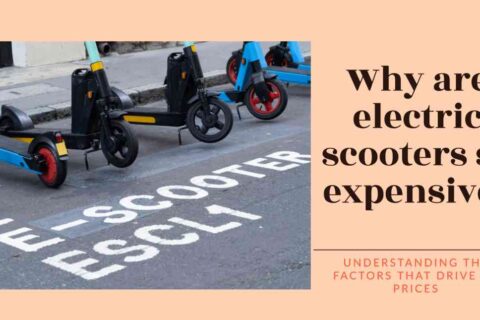




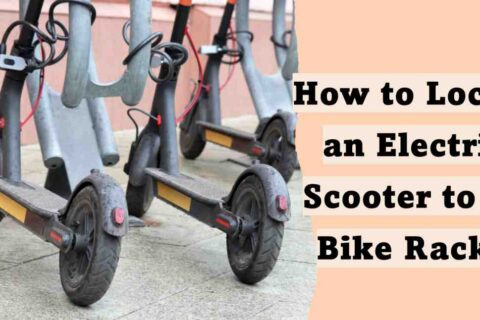
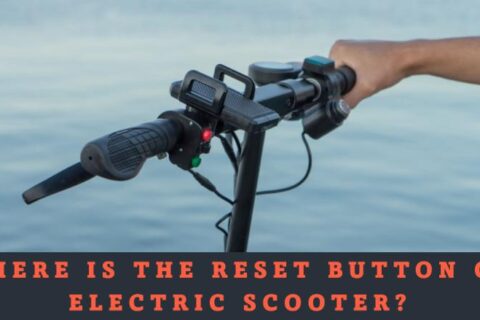

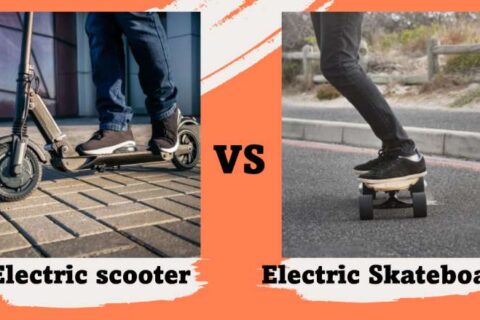
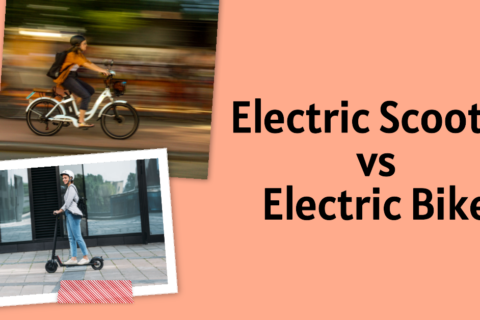


2 thoughts on “Electric Scooter Laws By State [Updated, 2023]”
Hi! This post couldn’t be written any better!
Reading through this post reminds me of my previous room mate!
He always kept chatting about this. I will forward this article
to him. Fairly certain he will have a good read.
Thank you for sharing!
Thank you for your time to read